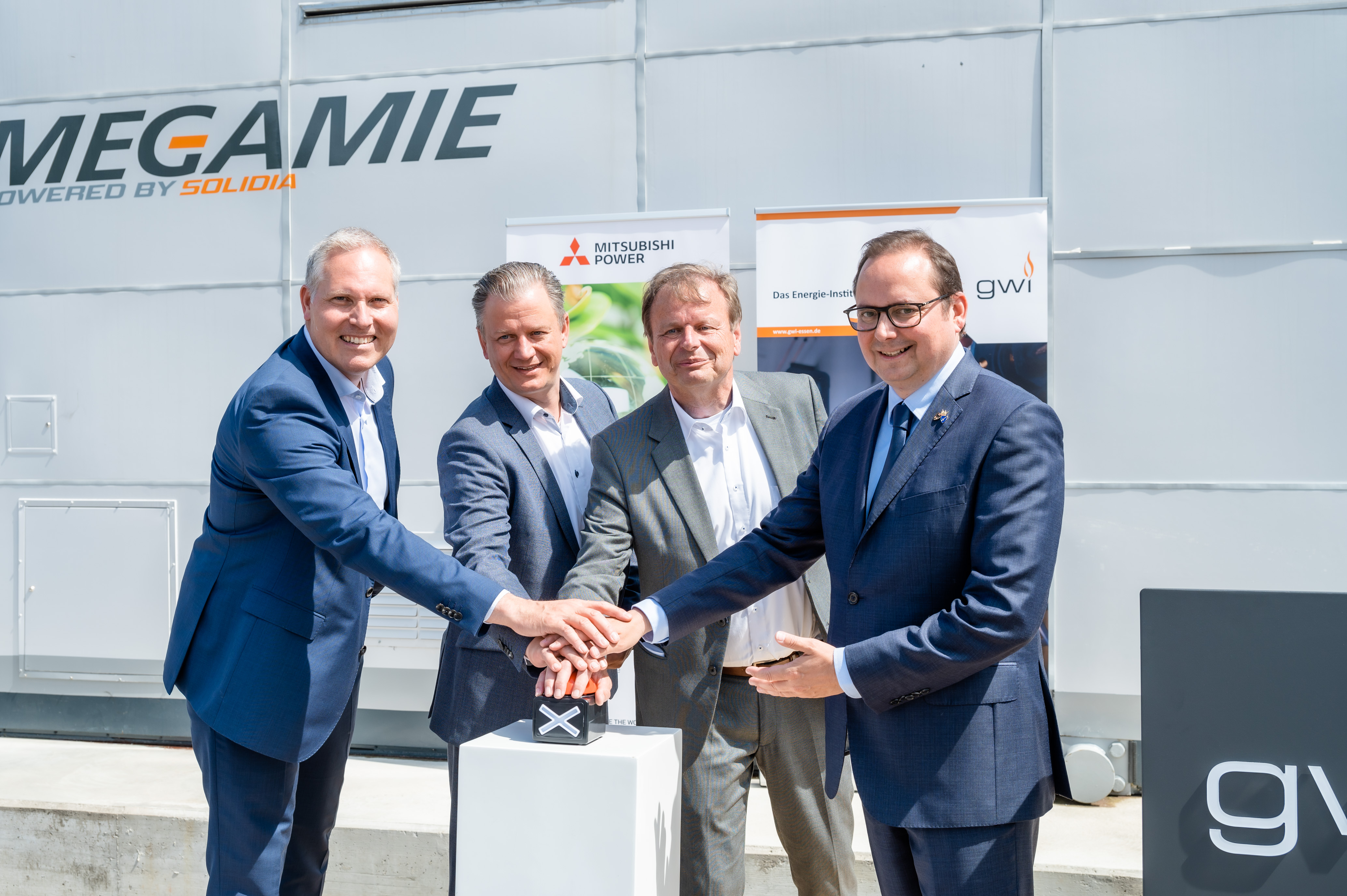Mitsubishi Power’s first hybrid solid oxide fuel cell (SOFC) in Europe began operations at the Gas- und Wärme-Institut Essen e.V. (GWI). The SOFC is a public demonstration of low-emissions, alternative clean energy systems that could power Europe’s future. The hybrid SOFC can operate with different fuels—from natural gas to biogas to H2—under real conditions and is integrated with the GWI’s power and heat supply.

Professor Emmanouil Kakaras Executive Vice President NEXT Energy Business, Head of Duisburg Branch at Mitsubishi Heavy Industries EMEA said, “This prestigious project along with the GWI, is proof that a future with clean energy from sustainable sources is possible. As Europe embarks on the journey towards net zero by 2050, technologies such as this will realize the goal of decarbonizing power.”
Situated in Essen, the energy capital of Europe, the highly efficient hybrid SOFC is intended to demonstrate and research the flexible operation of the hybrid SOFC and the use of H2 gas. The system is part of a research project, KWK.NRW 4.0, funded by the North-Rhine Westphalia state and European Regional Development Fund.
Thomas Kufen, Lord Mayor of the city of Essen said, “The City of Essen continues to live up to its historic reputation of leading the way in energy. We are proud to work together with the GWI and Mitsubishi Power Europe to explore technologies that will help Europe transition to a low-carbon economy. This is a breakthrough milestone heralding an era of climate-neutral resource-saving energy technology.”
Hybrid SOFCs hold great potential for everyday applications such as buildings or campuses hospitals, industries. They can be integrated into heat and power systems, can function independently or connected to a power grid, and use various fuels. When operated exclusively with hydrogen, the only emission is water.
“With the SOFC operational at the GWI campus, we are now looking forward to testing the possibilities. The flexibility of the plant, including ease of starting up and shutting down, its role in integrating renewable energy when the sun is not shining or the wind isn’t blowing; and most of all the potential for sustainable power using hydrogen, are aspects we will be looking into,” says Professor Klaus Görner, scientific director of the GWI.